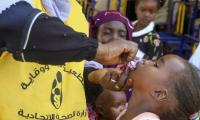KARACHI: An influential think tank on Friday criticised the International Monetary Fund (IMF) for applauding inaccurate economic indicators just to demonstrate that its program is performing well in Pakistan.
Institute for Policy Reforms (IPR), in its fact sheet on the “false statements made by the IMF”, said the mission chief Herald Finger recently made “a number of factual errors” in the ninth review of the Extended Fund Facility to the country.
“This may be due either to wrong information being provided by the (Pakistani) authorities or a lack of awareness of latest trends or due to pressure to demonstrate that the program is performing well and that the staff mission has been successful in inducing improvement in the economic indicators through promotion of appropriate actions,” an IPR statement said. It said there have been a number of developments, which could impact negatively on the growth rate in 2015-16.
“The cotton crop has failed and output is likely to be down by over 18 percent. This alone can reduce the GDP growth rate by one percentage point, given the role of cotton in the national economy,” it added. “Exports plummeted by over 14 percent in the first six months. Imports grew in overall quantity terms, thereby adversely impacting on production in import-substituting industries.”
The think tank said the largest industrial plant of the country, the Pakistan Steel Mills, is shutdown. Therefore, it is unlikely that the GDP growth rate will substantially exceed three percent in 2015-16. IPR criticised IMF on its assessment on the country’s poverty reduction. The mission said, “over the last decade or so poverty has come down in Pakistan.”
It said, according to the Social Policy and Development Centre’s estimates, the number of poor is annually increasing by more than three million. “The pressure for fiscal contraction under the IMF program has probably been one factor contributing to the recent increase in poverty,” the statement said.
It said there were also a number of factual inconsistencies in the statement made by Finger on the state of public finances and the IMF mission chief asserts that the reduction in fiscal deficit is a major achievement of the program.
The fiscal deficit is projected to come down to 4.3 percent of the GDP in 2015-16 from 8 percent of the GDP in 2012-13. However, in the latter year, there was a retirement of circular debt of the magnitude of 1.4 percent of the GDP.
“Currently, these liabilities have exceeded two percent of the GDP and inclusive of this the fiscal deficit will reach at least 6.3 percent of the GDP in 2015-16,” the statement said. “This indicates that the underlying magnitude of the fiscal deficit remains high.”
The think tank said the cash deficit may exceed 4.3 percent of the GDP in 2015-16 due to the cost of the prime minister’s agriculture relief package, higher tariff differential subsidy following the reduction in electricity tariff by Rs3/kilowatt hour, lower revenue from the gas infrastructure development cess and lower cash surplus by the provinces. “In fact, it will not be surprising if the fiscal deficit in 2015-16 exceeds the level attained last year of 5.3 percent of the GDP,” it added.
IPR said lower oil prices have created space for higher tax rates and revenues. Currently, the general sales tax rate on the highest consumption-volume petroleum product, high speed diesel oil, has been fixed at 51 percent, three times the standard rate of 17 percent.
It said the macroeconomic framework in the program projects that development spending will fall from 3.8 percent of the GDP in 2015-16 to 3.7 percent in 2016-17. Simultaneously, there is to be a big reduction in the fiscal deficit from 4.3 percent of the GDP to 3.5 percent. “These projections clearly do not provide the necessary fiscal space,” it said.
Honda officials posing for a photgraph. —APP/FileKARACHI: Honda Atlas Cars Pakistan Ltd has achieved a major...
SOS children village's children showing bags donated by Emirates International Airlines. — Emirates...
Automobiles at the shipping terminal are shown from the view of a drone in San Diego, California, US, March 26, 2025....
A representational photo of clash between police and protesters. —AFP/FileLAHORE: Pakistan’s governance crisis has...
A woman holds a smartphone displaying the logo of social network X . — AFP/FileElon Musk said his xAI artificial...
A representational image of a person using his cellphone for a digital transaction. — Unsplash/FileKARACHI: Chief...







